DmC: Devil May Cry Review (360)
- Updated: 15th Jan, 2013
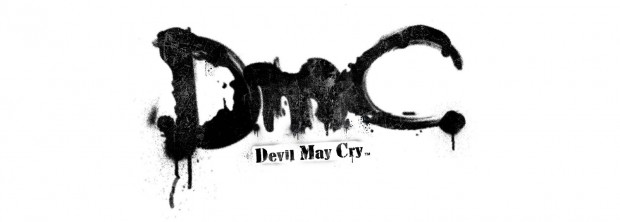 12 years is a long time. The world has changed, the state of games has changed and yet here I am. Sitting down playing a Devil May Cry game again like I did when I was 11. I really shouldn’t have. After all, the first Devil May Cry was an 18-rated game and I was way too young but somehow I got hold of a copy of Resident Evil: Code Veronica (yes I know) and included in that was a demo disk of the first 3 levels of Devil May Cry.
12 years is a long time. The world has changed, the state of games has changed and yet here I am. Sitting down playing a Devil May Cry game again like I did when I was 11. I really shouldn’t have. After all, the first Devil May Cry was an 18-rated game and I was way too young but somehow I got hold of a copy of Resident Evil: Code Veronica (yes I know) and included in that was a demo disk of the first 3 levels of Devil May Cry.
11-year-old me didn’t get hooked on the series because of the blood, gore or horror themes, all of which were rather tame by today’s standards. 11-year-old Lewis got hooked on the complexity of the combat system, discovering the best way to tackle each enemy. Each level was a puzzle to be solved and I rejoiced in that more than anything. Devil May Cry was also hard as balls. Its Normal mode was something that broke me into games; it taught me patience and timing. It taught me to pay attention. The infamous Son of Sparda difficulty is the type of thing that builds strong gamers.
DmC: Devil May Cry is the latest addition to the Devil May Cry family, except all isn’t well in the world of career demon hunters.
DmC’s origins are a far cry from the Japanese roots of the previous. Ninja Theory are based in Cambridge, England and are the first team to handle a Devil May Cry game other than Capcom themselves. It’s a brave move handing a four-game series to a developer that’s not just new to the franchise but also from a completely different culture.
From the start it’s been obvious Ninja Theory wanted to restore new life to Devil May Cry and the Western influence is clear. I’ll get it out of the way now; yes they redesigned Dante. The iconic white-haired brawler has black hair and looks more urban than goth-chic. In fact, all across the board DmC is a grittier, twisted retake on the Devil May Cry format. You’ll find no castles here. Instead, news towers line the horizon, citywide broadcasts tell tales of terrorists and the ominous metallic tower of a mega-corporation looms ominously over the city. Yet things aren’t all they seem.
In the world of DmC, humanity is an endless consumer, brainwashed by the news and adverts, except it isn’t the governments keeping everyone in check. It’s the demons. Led by the menacingly-bald Mundus, the demons have enslaved the world making use of the space between Earth and the other realms. Limbo lies adjacent to our own world and things that happen in Limbo also happen in non-Limbo. Doors open, buildings collapse, etc. This is where the similarity ends. In Limbo the environment itself is out to get you. The first time you get pulled in as the game starts, the world twists around you. Buildings distort and whole chunks of ground fall apart or break away. Mundus controls Limbo, and he wants you dead.
This is where Ninja Theory have woven their magic. Limbo opens up a whole new avenue for level design and they tackle it beautifully, from a mansion that pulls itself apart and teases you around its halls to a club with neon walls, flashing floors and long, twisting paths. The only thing I come close to comparing it to is El Shaddai. That sense of wonder and fun in design is clear. Yet all the while Ninja Theory succeed in keeping the dark overtones of Limbo itself. Advertising reveals its true purpose and demon hosts show their real appearances. Ever fought a giant holographic head inside a demonic representation of a news reel? I assure you, it’s just as brain tingling as it sounds.
Of course Dante is younger now and while the demo for DmC throws you into the midst of combat with no knowledge of how your weaponry works, the game itself breaks you in slowly. It never really stops. The whole game through it leaks bits; a new weapon here, a new ability here, a new gun here, each giving just enough time to get comfortable with its use before mixing it up again. The story itself is a rollercoaster ride which, while predictable in some places, breathes new life into an ageing saga.
Dante has 4 types of weapon. His sword Rebellion acts as the midline; neither fast nor insanely strong it can dish out plenty of damage. Demon and Angel weapons serve to mix up the melee. Angelic weapons are faster with a wider range of attack but deal less damage while Demonic weapons are slow but extremely heavy hitting.
To round out the armoury of demon-killing awesome, Dante is also equipped with his signature guns, Ebony and Ivory, with more guns unlocked as the game goes on. Stringing these together is simple; hold RT and press an attack button to use the Demonic weapon and LT to use Angelic. Pressing neither results in Dante using Rebellion.
In her recent preview of DmC Debbie wrote:
“The giant rating meter provides instant feedback on how stylish you are and you’re free to kill them with a crappy button mash or to play the game properly. You’ve been taught the skills. It’s up to you to use them.”
And she’s right. While building the series’ now-iconic style meter, it’s all too easy to build it up without really knowing what you’re doing. Combat is fast-paced and intense, and mashing – at least in the early game- is a simple way of getting through. But Ninja Theory pace your weapon acquisitions for a reason. The first run-through is training. It wants to teach you the ropes, it wants you to take the time to learn combos and,especially when starting on the default Devil Hunter, it wants you to feel relaxed doing so. Of course, learning your combos increases your points, thus giving you more points to spend on upgrades and new abilities, which means you have more combos to use to earn more points and so the circle continues.
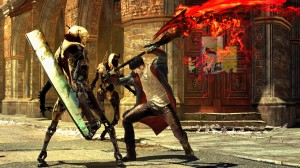 The real DmC starts when you ramp up the difficulty after finishing your first game. This is where Devil May Cry fans get the game they wanted. Enemies are more powerful, their combat tricks are improved and you have to be skilled to survive.
The real DmC starts when you ramp up the difficulty after finishing your first game. This is where Devil May Cry fans get the game they wanted. Enemies are more powerful, their combat tricks are improved and you have to be skilled to survive.
Completionists will be happy to see the return of the secret missions, this time in the form of keys that need collecting and hidden doors that said keys unlock. Each mission tests your skill at everything from crossing a course quickly to taking down enemies when you only deal damage in the air. Alongside the secret missions, find-em-all Lost Souls litter the levels with point bonuses given for finding them all. Back this all up with a kickass wubby metal soundtrack produced by a tantalisingly odd but brilliant collaboration between Noisia and Combichrist and you have a game that deserves the Devil May Cry in its name.
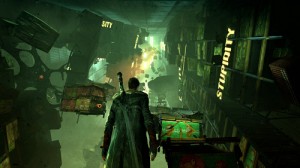 I learnt all the secrets Devil May Cry had to offer. I suffered through Devil May Cry 2. I rejoiced at the marvellous combat of Devil May Cry 3, I smiled when I saw Dante’s stubble in HD at the release of Devil May 4 and I have a confession to make.
I learnt all the secrets Devil May Cry had to offer. I suffered through Devil May Cry 2. I rejoiced at the marvellous combat of Devil May Cry 3, I smiled when I saw Dante’s stubble in HD at the release of Devil May 4 and I have a confession to make.
I complained when I saw the Dante redesign. I thought that the inclusion of Dante’s brother Vergil and the return of Mundus would only serve as fan service in a game that could never do as well as the Japanese predecessors I have adored for the past 12 years. I was wrong.
I just played a Devil May Cry game. Not the one I was expecting, nor the one I wanted but one that fought tooth and nail to prove its worth in the face of negativity.
It succeeded.
DmC: Devil May Cry is out now on PlayStation 3 and Xbox 360.


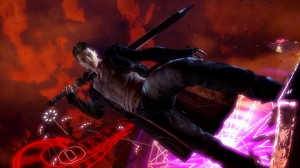
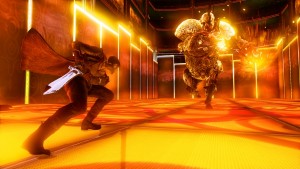
Follow Us!